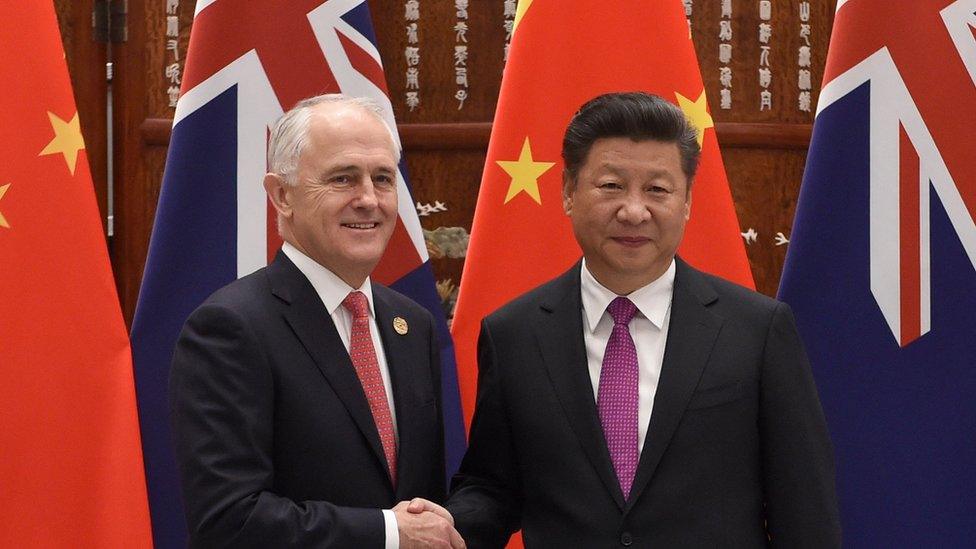South China Sea dispute: China lands bombers on island
- Published
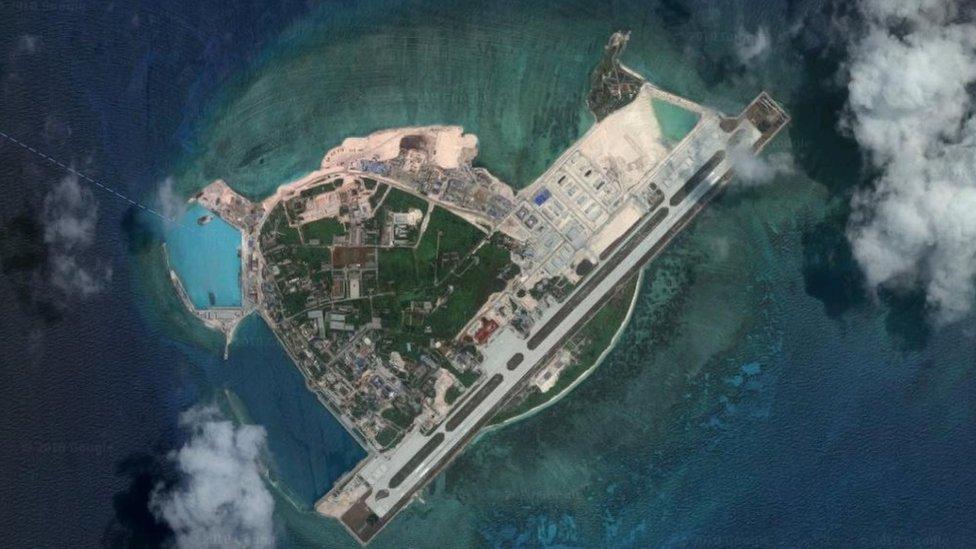
An H-6K bomber is believed to have landed on Woody Island
China has for the first time landed bombers on disputed territory in the South China Sea, its air force said, prompting fresh US warnings that it is destabilising the region.
The long-range H-6K bomber was among those which took part in drills on islands and reefs to improve China's ability to "reach all territory".
The sea, a key trade route, is subject to overlapping claims by six countries.
China has been accused of militarising the sea to support its vast claims.
The latest move could provoke new tension in the region.
Beijing's defence ministry did not specify where the bombers landed but said the training involved simulated strikes against sea targets.
An H-6K pilot, Ge Daqing, was quoted in a statement as saying that the training "sharpens our courage and enhances our capabilities in a real war".
Experts from the Asia Maritime Transparency Initiative, external (AMTI) said a video from the Chinese Communist Party's People's Daily newspaper showed an H-6K landing and taking off from a base on Woody Island, the largest of the Paracel Islands.
Allow X content?
This article contains content provided by X. We ask for your permission before anything is loaded, as they may be using cookies and other technologies. You may want to read X’s cookie policy, external and privacy policy, external before accepting. To view this content choose ‘accept and continue’.
Woody Island, which China calls Yongxing, is also claimed by Vietnam and Taiwan.
Although China has deployed fighter jets to Woody Island in the past, this is the first time bombers have landed on a South China Sea island, the AMTI said. It added that an H-6K could reach all of South East Asia from the island.
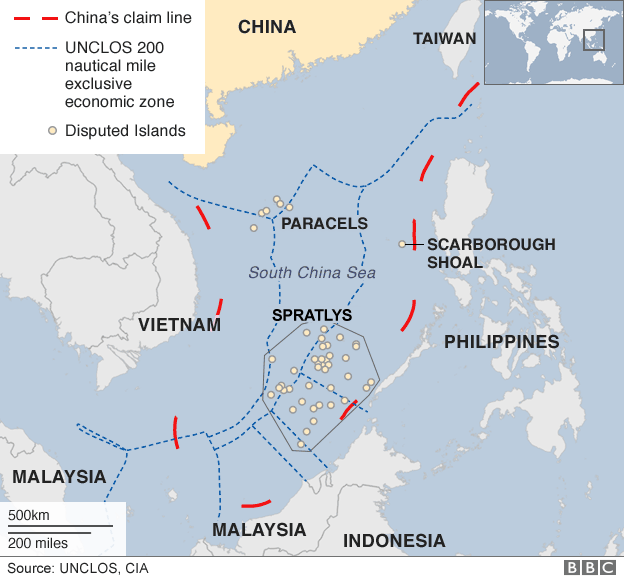
Analysts say bombers will likely soon land in the Spratly Islands further south, where runways and hangars have been built on reefs.
From there H-6Ks could reach northern Australia or US bases on Guam, says the AMTI.
The US has sailed warships close to artificial islands built by Beijing in the South China Sea to challenge what it sees as Chinese efforts to restrict freedom of navigation in a strategically important area.
A Pentagon spokesman told Reuters news agency that the US "remains committed to a free and open Indo-Pacific".
"We have seen these same reports and China's continued militarisation of disputed features in the South China Sea only serves to raise tensions and destabilise the region," Lt Col Christopher Logan said.

The South China Sea dispute
Rupert Wingfield-Hayes says China is determined to assert its control
Sovereignty over two largely uninhabited island chains, the Paracels and the Spratlys, is disputed by China, Vietnam, the Philippines, Taiwan and Malaysia
China claims the largest portion of territory, saying its rights go back centuries - in 1947 it issued a map detailing its claims
The area is a major shipping route, and a rich fishing ground, and is thought to have abundant oil and gas reserves

- Published7 July 2023
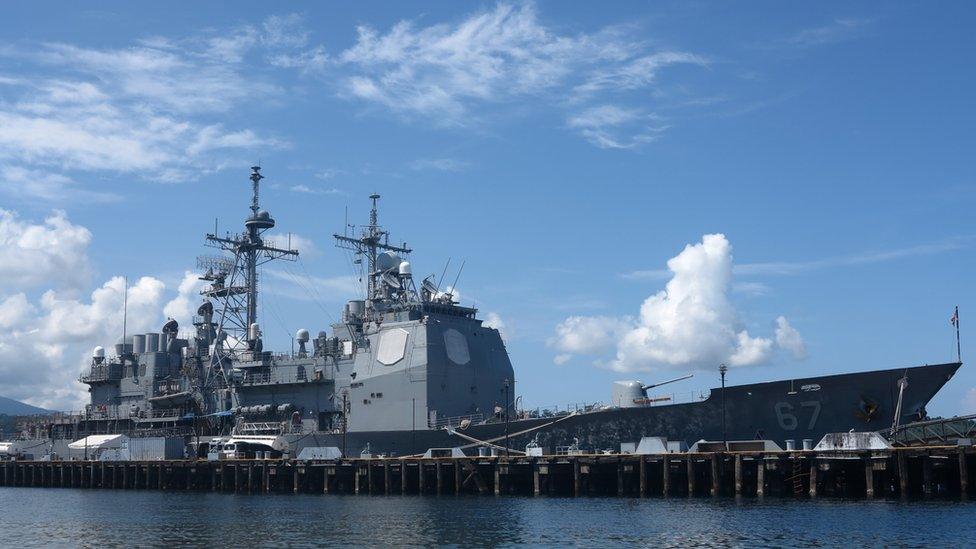
- Published13 February 2018
- Published9 October 2017
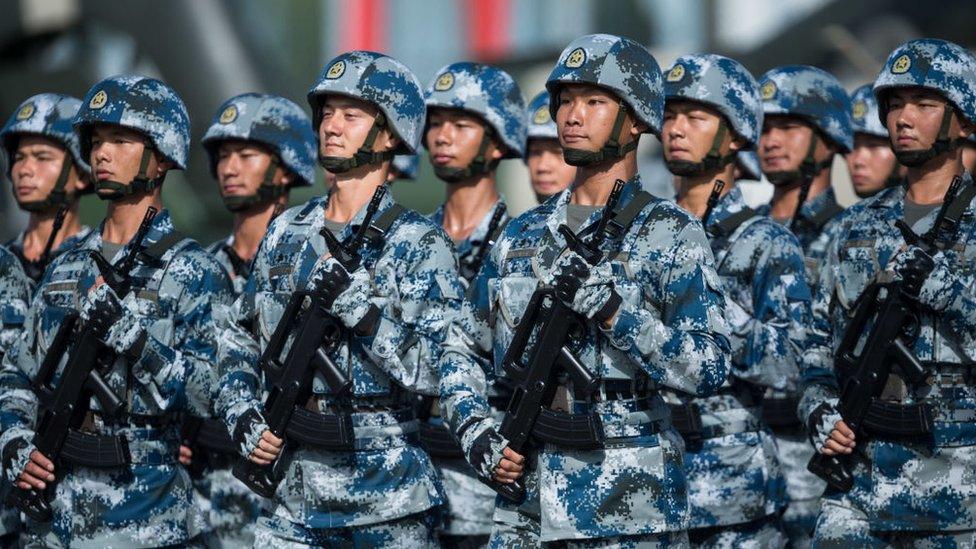
- Published23 March 2018

- Published6 November 2017

- Published24 November 2017
